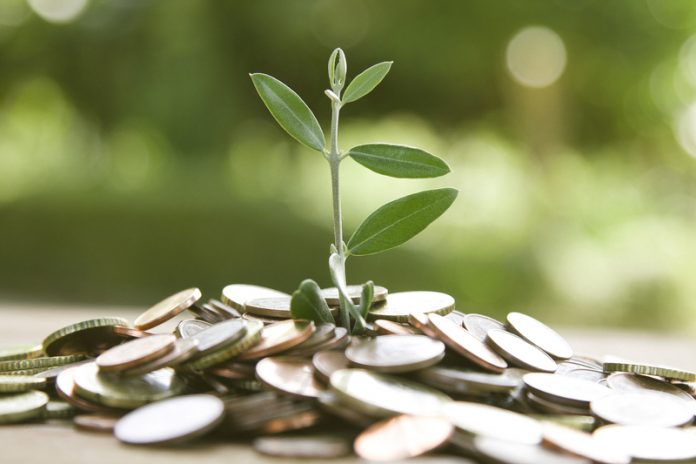Steven Stone, Chief, Resources and Markets Branch, UN Environment asks if we are making progress towards greener and more inclusive economies
Deals are in the air right now; New Deals, Green Deals, even New Green Deals have been proposed in governments around the world. All suggesting the need to renew existing social contracts and the license to operate for business.
But those deals aren’t exactly as new as they sound. It was Franklin D. Roosevelt who introduced the original New Deal in the United States ( U.S.) back in the 1930s to reset the clock on capitalism, reshape the economy and install social floors to save millions of Americans from poverty after the Great Depression.
Today, as we witness wave after wave of economic nationalism and global retrenchment, putting into question the foundations of the post-World War II multilateral system, we are also seeing a resurgence of initiatives that put the environment and sustainability at the core of economic policy and growth strategies. Just as Roosevelt’s New Deal responded to an economic crisis, these New Deals respond to a critical period for our environment.
And not a moment too soon. The vital signs of our planet are stark enough – every day we hear about rising concentrations of plastic in our oceans, surface temperatures that are causing extreme weather, and air quality statistics that defy belief. Such as the fact that over 90% of the world’s population now lives and breathes in areas beyond World Health Organization (WHO) safety standards.
How did we reach such an impasse? And how we will rise above it? The answer goes back to a very simple adage that has featured in U.S. politics over the decades: it’s the economy, stupid.
It really is the economy. As early as March 2009, just after the financial meltdown wiped 50% out of the value of stock-markets and left governments scrambling to maintain stability and confidence and liquidity, UN Environment and its partners launched the Global Green New Deal, focusing on how managing the stimulus-response in this new economic reality could both jump-start jobs and lead to growth and good environmental outcomes. Like investing in energy efficiency in buildings leads both to a reduction in heating and cooling costs and energy consumption – and investing in solar and wind spur job growth and local development and new energy markets.
The Global Green New Deal became the basis for the Green Economy Initiative, from which a wider partnership was born: the Partnership for Action on Green Economy or PAGE – a place where thought leaders, sustainability champions and the curious can converge to compare notes on what is both a global challenge and national imperative: creating economies that are fit for purpose in the 21st century. Economies that create wealth and income, without drawing down the base of our natural endowment or the living conditions that sustain us.
The inclusive green economy has emerged as an alternative to the status quo that creates growth by liquidating natural assets, investing in people and ecological infrastructure as a source of future innovation, revenue, and growth. And one that is based on circularity, resource efficiency and resilience.
Over 70 countries around the world currently have green growth or green economy plans in place, and many others are considering them. Among them are the green deals that frame national policy in the Netherlands; the Solar Alliance at play in India; the framing of Ecological Civilization in China; and the New Green Deal recently tabled in the U.S. Congress.
The tension between investing in technologies that enhance national and global welfare and the temptation to put local and national interests first is likely to rise as the environment deteriorates and more people are forced to migrate. Which is why it has never been more important to embrace the two most important international deals of the past decade: the Sustainable Development Goals, and the Paris Agreement.
The goals set out a common agenda and establish a roadmap and targets for 2030 – including the necessary ingredients for establishing a social floor of access to water, food, shelter, education and health. And the climate agreement is just plain good sense because it protects the resources, we all share: the air we breathe and the atmosphere that knows no other boundary except the one imposed by the stratosphere.
To make our economies greener, fairer, and more inclusive, we need to seriously re-evaluate the economic policies that have resulted in the pollution of our air, water and food, and that are resulting in social inequalities not seen since the 1920s.
This includes reversing fiscal policies that reward polluters and further concentrate wealth, and a reassessment of our over-reliance on consumer-led growth to keep economic motors humming. Growth that has created the illusion of progress and prosperity while in fact eroding the very basis of inclusive wealth.
Sooner or later, the bills will come. Mother Nature has been pretty lenient with us, giving us time to make mistakes, learn, and feel our way forward. But its time now to put the pieces together, to solve the puzzle of creating prosperity that does not undermine our chances for a prosperous future.
In March 2019, world leaders gathered in Nairobi, Kenya for the Fourth UN Environment Assembly. The circular economy and how we produce and consume was front and centre to the discussion: a clear sign that governments are ready to re-evaluate the models that have dominated our economic landscapes for decades.
Which brings us back to new deals, and new ways of dealing with our damaged and polluted planet as we seek to create a world in which our children will have a chance for a better life. And that sounds like a deal we can all get behind.
Steven Stone
Chief, Resources and Markets Branch
UN Environment
Tel: +254 (0)20 762 1234











